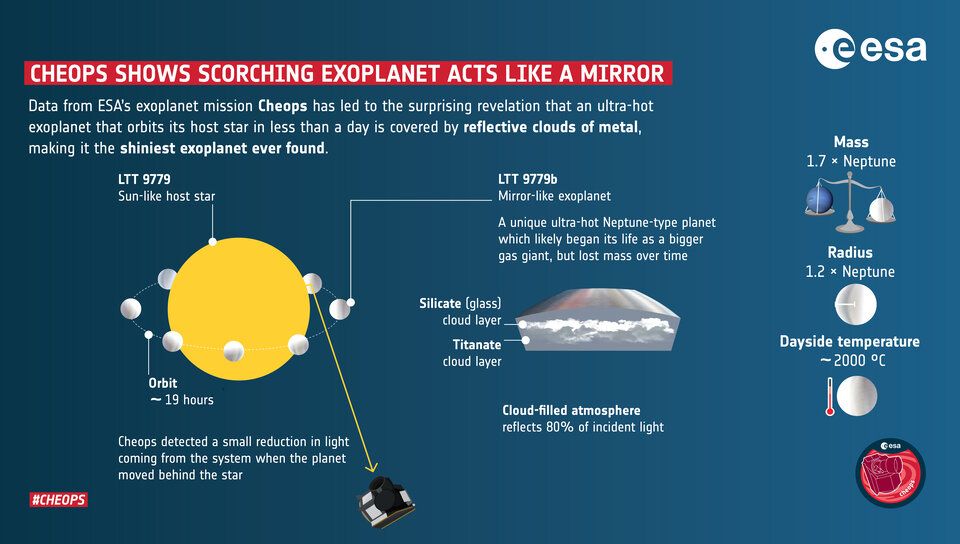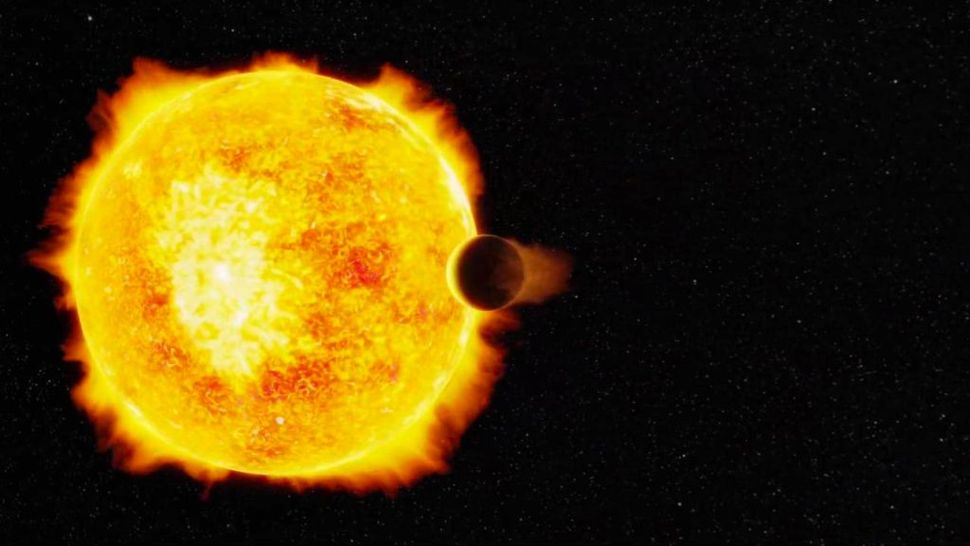LTT9779 b is so reflective that it rivals Venus and acts like a giant cosmic mirror.
Key Takeaways:
- LTT9779 b reflects 80% of its star’s light, making it the brightest known exoplanet.
- Its metallic clouds of vaporized silicates and metals create a mirror-like atmosphere.
- Despite scorching temperatures over 3,650°F (2,000°C), the planet has retained its atmosphere.
- LTT9779 b is the first ultra-hot Neptune discovered in the “hot-Neptunian desert.”
- Scientists believe its reflective clouds help it survive extreme heat without evaporating.
____________
A Cosmic Mirror in Space
Astronomers have discovered an extraordinary exoplanet, LTT9779 b, that reflects 80% of its star’s light, making it the most reflective exoplanet ever detected. Located 264 light-years away, this ultra-hot Neptune-sized world is covered in metallic clouds that act as a giant cosmic mirror. By comparison, Venus—our solar system’s most reflective planet—reflects only 75% of sunlight, while Earth reflects just 30%.
LTT9779 b was first identified in 2020 by NASA’s Transiting Exoplanet Survey Satellite (TESS), but its extreme reflectivity wasn’t confirmed until follow-up observations with the European Space Agency’s CHaracterising ExOPlanet Satellite (CHEOPS). With a diameter nearly five times that of Earth, LTT9779 b is the largest known celestial mirror.

An Impossible Planet in the Hot-Neptunian Desert
One of the biggest mysteries surrounding LTT9779 b is how it managed to retain its atmosphere. With a surface temperature reaching 3,650°F (2,000°C), it was expected to have its atmosphere stripped away by stellar radiation, leaving behind a barren rock. Instead, scientists found that the exoplanet’s thick metal clouds reflect much of the star’s energy, preventing it from overheating and evaporating.
Researchers compare the formation of these clouds to condensation in a steamy bathroom—when metal vapors become oversaturated in the atmosphere, they condense into reflective clouds despite the extreme heat. This unique mechanism likely helps LTT9779 b survive in the so-called “hot-Neptunian desert”—a region where planets of this size and mass are typically absent.

With an incredibly short orbit of just 19 hours, LTT9779 b defies conventional planetary formation models. Its survival in such harsh conditions makes it a prime target for further studies with the James Webb Space Telescope and the Hubble Space Telescope, offering new insights into exoplanetary atmospheres and the evolution of extreme worlds.
The team’s research is published in the journal Astronomy & Astrophysics.




